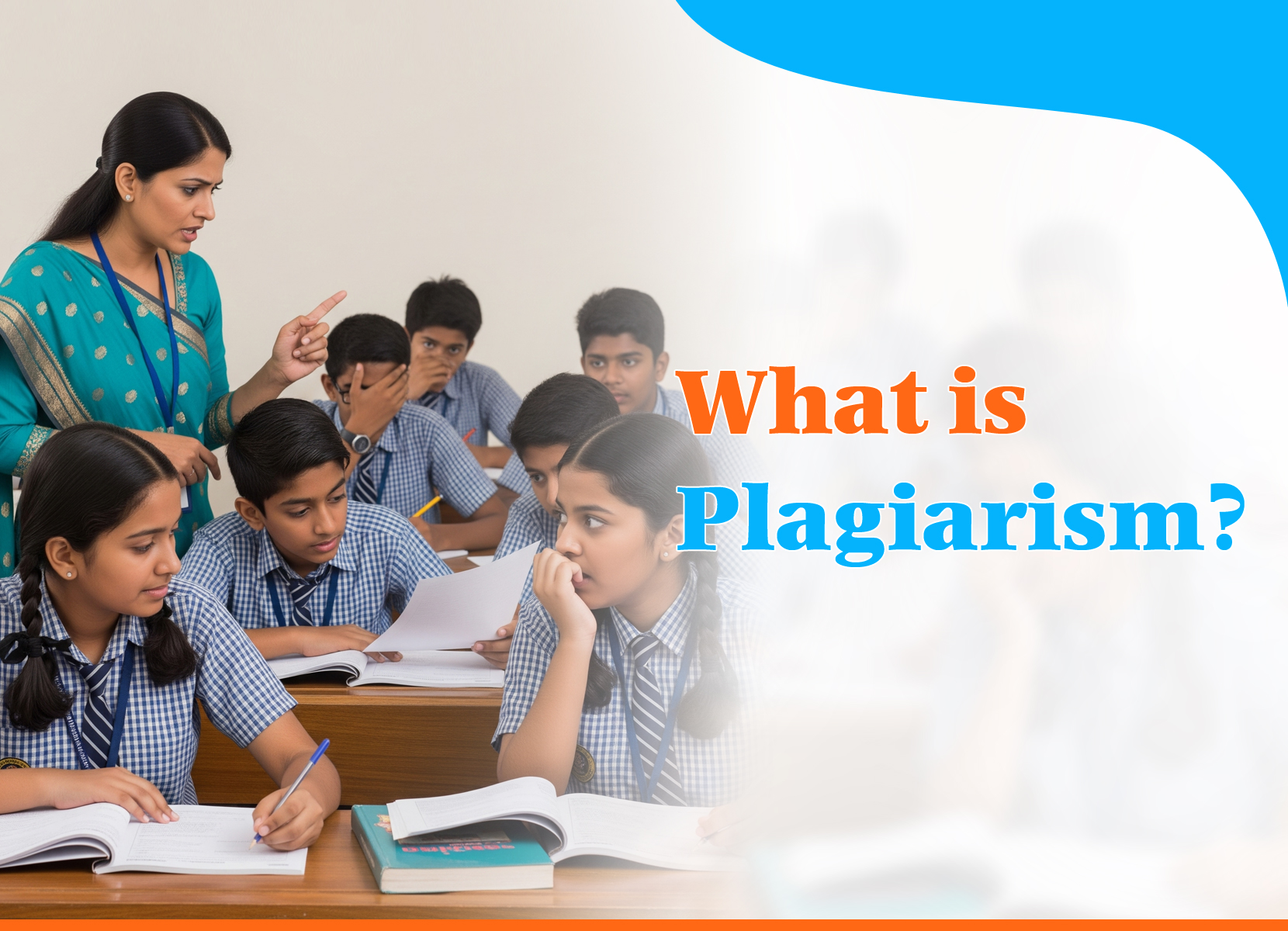Plagiarism for Students: What It Means & Why You Must Avoid It in 2025
Have you ever copied a paragraph from a website and pasted it into your homework? Maybe just to finish faster? Most students have done it at some point. It is called plagiarism. It might seem insignificant and it is clearly not. Plagiarism for students is a bigger problem than many students realise.
To better understand, imagine spending hours planning and working on a project. You read articles, made notes from books you referenced, noted down your own ideas and views for the project. Incidentally, another student submits a nearly identical project before you do. Would you like that?
For a student, it is important to understand what plagiarism means, why schools are strict about plagiarism, and how you can avoid it.
What is Plagiarism?
In simple words, someone else does the work, and you take the credit for it. That’s the easiest way to understand plagiarism.
Plagiarism for students usually means copying from books, websites, or even a friend’s notebook and pretending it’s your own work. You don’t always have to steal an entire paragraph. Even if you just take the idea and don’t mention the source or translate it from one language to another without permission, it still counts as plagiarism.
Some students do it by mistake. Maybe they don’t know the rules or forget to cite the source. That’s called unintentional plagiarism. Not knowing how to cite sources or failing to keep track of where information came from are common mistakes. However, it still leads to trouble if found.
Why Do Schools Take Plagiarism Seriously?
School is a place of learning. So, if you’re copying instead of thinking, there’s no real learning happening. That’s the heart of the problem. Plagiarism is a shortcut that ultimately prevents you from developing real skills.
When you copy, you’re skipping the thinking part. It might save time now, but you lose out in the long run. Schools develop and value academic integrity. It means that you work honestly, make an effort to understand and learn. It means giving credit where it is due.
Many Indian schools, irrespective of boards like CBSE and ICSE, have strict rules on student plagiarism. Depending on their policy, students may be asked to redo the work, lose marks, or face more serious consequences.
What Plagiarism for Students Looks Like in School
Here are some examples you might recognize:
- – Direct Copying: Copy-pasting from the internet or books without saying where it came from
- – Rewriting Without Credit: Rewriting or paraphrasing information from a book without credit
- – Project Reuse: Using your sibling or friend’s old projects
- – Improper Citation: Not mentioning the source correctly or vaguely
- – Group Work: Copying answers during group work and pretending it was your effort
- – Patchwork: Mixing a few lines from here and there, changing some words, and submitting it
The best to avoid plagiarism is to build the habit of writing your views or thoughts without worrying about perfection or accuracy.
Simple Ways to Avoid Plagiarism in School Work
You have to remember that your teachers do not expect a PhD level work. They only want to know your understanding of the topic, your thought process, your views and your effort. These are some of the things you can start doing to avoid plagiarism:
- – First, understand the topic before searching books or the internet.
- – Make your own notes, jot down your ideas.
- – If you use a fact or quote, mention where it came from (like “According to…” or add a source at the end)
- – At the end of the project, mention all the sources you used. It is called adding a Bibliography.
- – Learn to paraphrase, which means writing things in your own style
- – There are free plagiarism checkers online like Duplichecker you can use to check your work before submitting
Why Original Work Really Matters
In 2025, most schools in India are becoming stricter about originality. With more online submissions and tech-based learning, tools to detect plagiarism in school are common. Even teachers now get trained to spot copied work and understand plagiarism trends.
As part of CBSE’s latest guidelines, schools are encouraging students to focus on ethical writing and critical thinking. This shift is good, it gives students space to learn the right way from the start. Even the rise of AI tools means teachers are now more equipped and vigilant to spot any form of copied content, whether from a website or an AI generator.
Plagiarism for students is not a rule in a textbook. Submitting your original work builds confidence as you learn to write, explain and be unique. And honestly, it just feels better knowing the work is truly yours.

